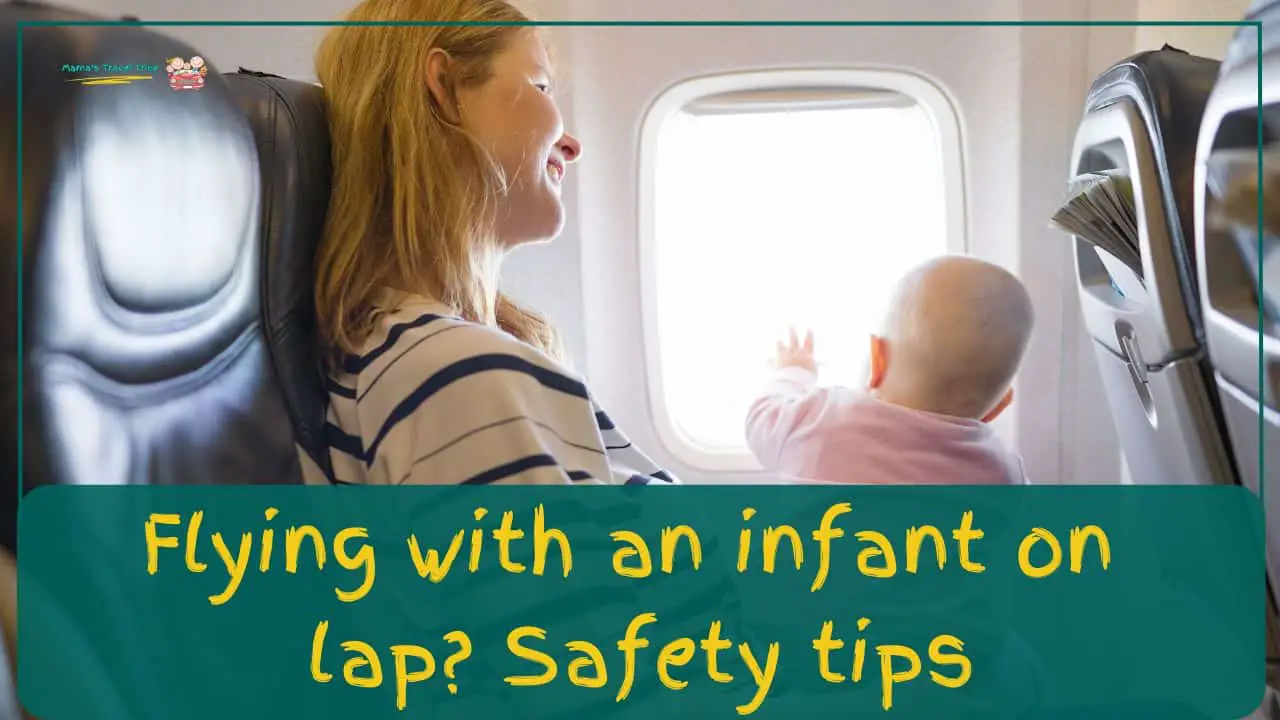Flying with an infant on lap can be tricky, but it’s manageable with the right tips, like choosing the correct tips and dressing appropriately. From choosing the best seats to staying hydrated, I’ve got you covered. Keep reading for essential advice that will make your journey easier.
Are You Flying With an Infant on Lap? Follow These Tips
To fly with an infant on your lap, you should ensure safety by using an FAA-approved infant belt. Pack essentials like diapers, wipes, and snacks. Furthermore, use a pacifier during takeoff and landing to help with ear pressure. You should also keep comfort items handy to soothe your baby throughout the flight.
Use an Infant Airplane Harness

Certain airlines allow the use of an FAA-approved infant harness for lap children. This device provides extra safety by securing your baby to you during turbulence. It’s especially important when flying with an infant on a lap internationally because long flights can have more turbulence.
Choose the Right Seats
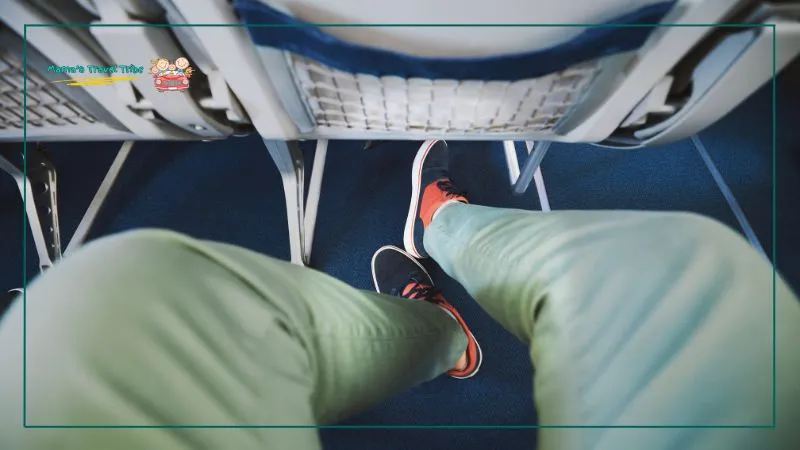
Picking the best seats can make a big difference. Aim for bulkhead seats with extra legroom, which give you more space to manage your baby. Window seats are great for privacy, but aisle seats make it easier to get up and move around.
Note that such tips for traveling with an infant by plane will help you find the best seat for you and your baby.
If you’re contemplating a car seat for air travel, don’t miss our ‘Mastering Car Seat Travel: 11 Essential Tips‘ for secure and stress-free journeys.
Stay Seated During Turbulence
Even mild turbulence can be unsettling, but staying seated and holding your baby securely is crucial. During turbulence, it’s best to remain in your seat, even if it feels minor. Always keep your baby close to you and securely fastened if you’re using an infant harness.
I remember one flight where we hit unexpected turbulence. I immediately held my baby tightly and stayed seated. It made all the difference in keeping us both safe and calm. Avoid moving around the cabin during these moments, as it can be dangerous.
If you’re already standing, quickly but calmly return to your seat and buckle up. Ensuring your baby’s safety during turbulence will give you peace of mind and keep your little one protected.
Bring Necessary Gear
When flying with an infant on your lap, bring the right gear. One of the most important items to pack is a baby carrier or sling. Trust me, having a carrier can be a lifesaver. It keeps your hands free, making it easier to board and disembark the plane.

Plus, many babies find the gentle rocking motion of walking in a carrier soothing, which can help calm them during the flight.
I remember the first time I flew with my little one, I was so grateful I had a sling. It gave me the freedom to handle our bags and even grab a quick snack.
Make sure your carrier is comfortable for both you and your baby, and that it’s easy to take on and off. This small piece of gear can provide a lot of comfort and convenience during your journey.
Dress Appropriately
Always make sure to dress your baby in soft, breathable fabrics. Start with a simple onesie and add layers like a sweater or a blanket that can be taken off if it gets warm.
Don’t forget a hat and socks, as extremities can get cold easily. Having layers gives you the flexibility to adjust to the changing cabin temperatures.
Prepare for Pressure Changes
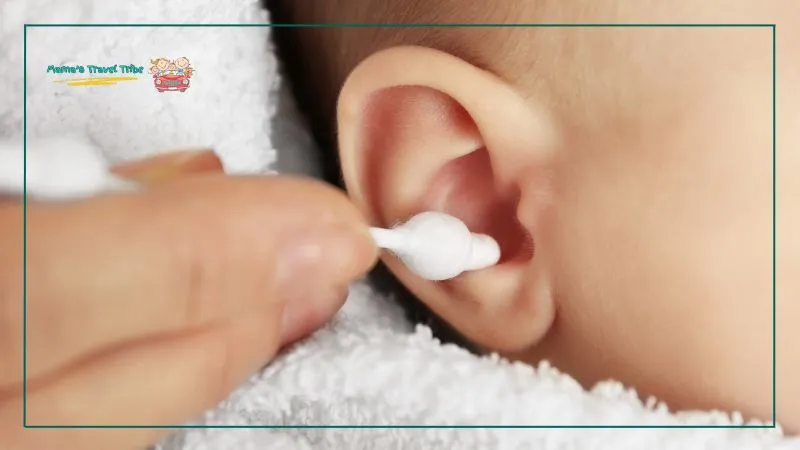
One of the trickiest parts of flying with a baby is dealing with pressure changes, especially during takeoff and landing. If you’re on a long flight with a baby on your lap, these changes can be even more challenging. Babies have sensitive ears, and the pressure can cause them discomfort or pain.
To help your baby adjust, try nursing or bottle-feeding during takeoff and landing. If your baby uses a pacifier, that can work too. I always kept a bottle ready for these moments. You might also want to bring some favorite snacks for older infants, as chewing can also help.
Another tip is to encourage your baby to yawn by yawning yourself. Babies often mimic our actions, and yawning can relieve ear pressure. By being prepared, you can help your baby stay comfortable and avoid unnecessary tears during the flight.
Secure Loose Items
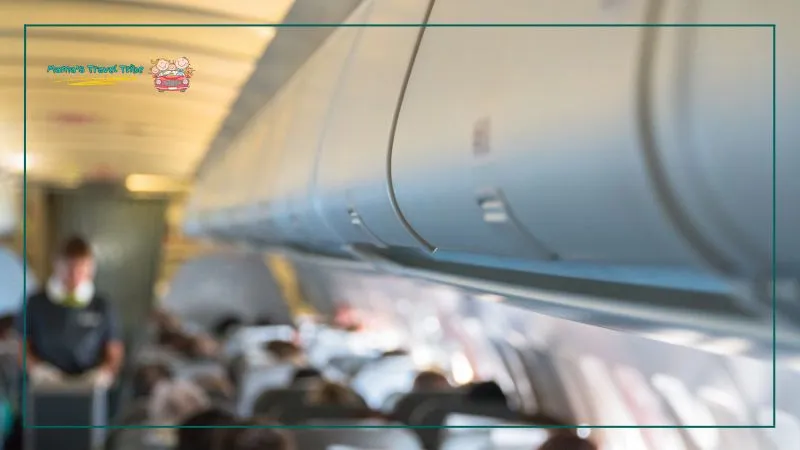
When you’re flying with an infant on your lap, safety is a top priority. One important step is to make sure all your carry-on luggage and loose items are securely stowed away. In case of severe turbulence, loose items can become hazardous, potentially causing injury to you or your baby.
I always double-check that everything is tucked away properly. Stow your bags under the seat in front of you or in the overhead bin, and keep any small items like toys, bottles, or pacifiers within easy reach but secured.
It’s also a good idea to have a small, organized bag with the essentials so you’re not fumbling around during the flight.
Once, during a particularly bumpy flight, I was so glad I had everything secured. It kept us safe and reduced stress, allowing me to focus on comforting my baby.
Hydration is Key
Keeping your baby hydrated during a flight is essential, especially on long trips. The cabin air is very dry, which can dehydrate both you and your baby quickly.
Make sure to offer your baby fluids regularly throughout the flight. If you’re breastfeeding, nurse often. If you’re using bottles, have plenty of formula or breast milk ready.
I always bring extra bottles of water and juice for my baby. On a long flight with a baby on my lap, I noticed that offering fluids frequently kept my baby more comfortable and less fussy. You can also bring a sippy cup or a small bottle to make it easier for your baby to drink.
Staying hydrated helps prevent dry skin and irritability, making the flight smoother for both of you. So, keep those drinks handy and offer them often to keep your little one happy and healthy.
Sanitize Often
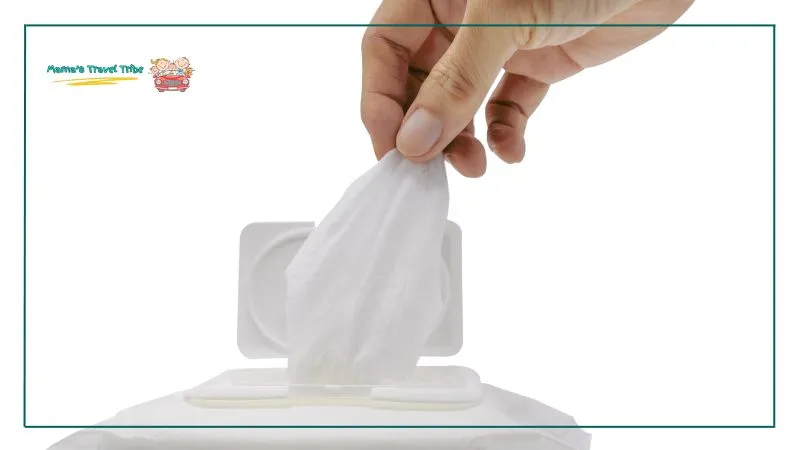
When flying with an infant on your lap, keeping things clean is crucial. Bring sanitizing wipes to clean any surfaces your baby might touch, like the seat belt, tray table, and armrests. Babies love to explore with their hands and mouths, so it’s important to keep these areas as germ-free as possible.
I always carry a pack of sanitizing wipes in my carry-on. Before settling in, I wipe down everything my baby might touch.
Once, after wiping down our seating area, I felt much more at ease knowing my baby was in a cleaner environment. It’s a small effort that makes a big difference in keeping your little one safe from illnesses.
Check Airline Policies
Every airline has different policies regarding lap infants, including age limits, proof of age requirements, and specific rules for international travel. Before your flight, check these policies to ensure you comply and are well-prepared. This will help avoid any last-minute surprises at the airport.
I always double-check the airline’s website or call customer service to confirm their policies. Note that some airlines require additional documentation or have specific seating arrangements for lap infants.
Once, I had to provide a birth certificate for my baby to prove her age. Being prepared with the right documents made the check-in process smooth and stress-free. Knowing and following the airline’s policies ensures a smoother journey for you and your baby.
As you prepare for the nuances of lap travel, you might also find our guide on ‘Proven Tips for Effortless Air Travel with a 6-Month-Old‘ helpful for your growing baby.
FAQs
When Is It Safe To Travel With a Newborn by Plane?
Your newborn baby must be at least two months old before flying. This gives your baby time to build a stronger immune system. However, always consult with your doctor to get personalized advice based on your baby’s health.
Is It Safe To Travel With a 6-Month-Old Baby in Flight?
Yes, it is safe to travel with a 6-month-old baby. At this age, babies are a bit more robust and can handle the changes in cabin pressure and air quality better. Ensure you have all the necessary items to keep your baby comfortable.
How To Sleep With Baby on Lap on Plane?
To help your baby sleep on your lap during the flight, use a soft blanket or pillow to support them. A baby carrier can also provide a comfortable and secure way for your baby to nap. Try to keep the environment as calm and quiet as possible, and follow your baby’s usual sleep routine to help them relax.
Do Infants Fly Free Internationally?
Most major airlines allow infants under the age of two to fly for free or at a reduced fare on international flights if they sit on an adult’s lap. Always check with your specific airline. You should understand their policy and any associated fees.
After mastering flying with an infant, why not explore new destinations? Our ‘20 Ideal Travel Spots for Toddlers: An Ultimate Guide‘ offers exciting options for your toddler’s first trips.
Conclusion
Flying with an infant on a lap doesn’t have to be stressful. Remember these key points to ensure a smooth and safe flight:
- Use an infant airplane harness for extra safety.
- Choose the right seats for comfort and convenience.
- Bring necessary gear like a baby carrier or sling.
- Stay seated during turbulence and hold your baby securely.
- Keep your baby hydrated and dress them in layers.
By following these tips, you can make your flight with your little one enjoyable and stress-free. Safe travels!

